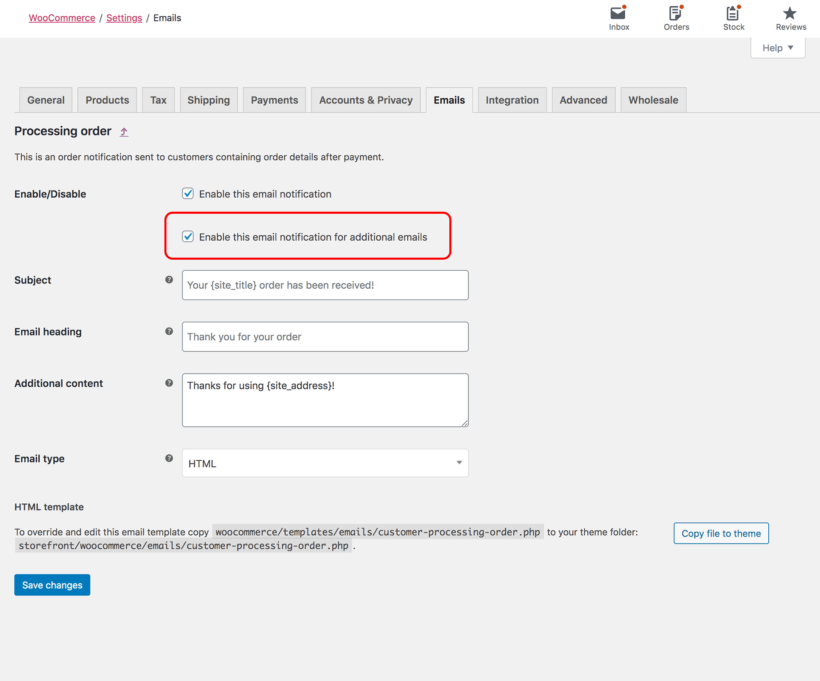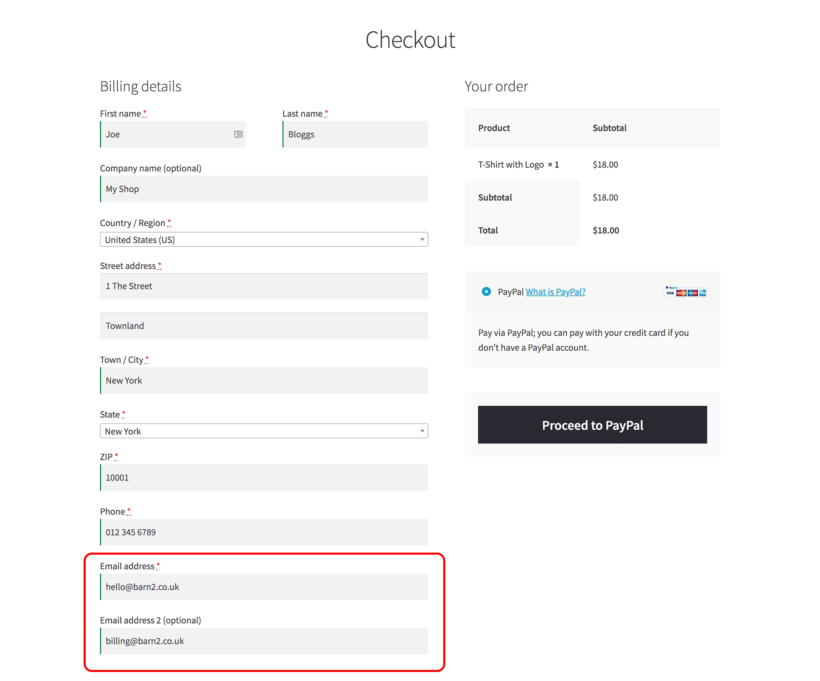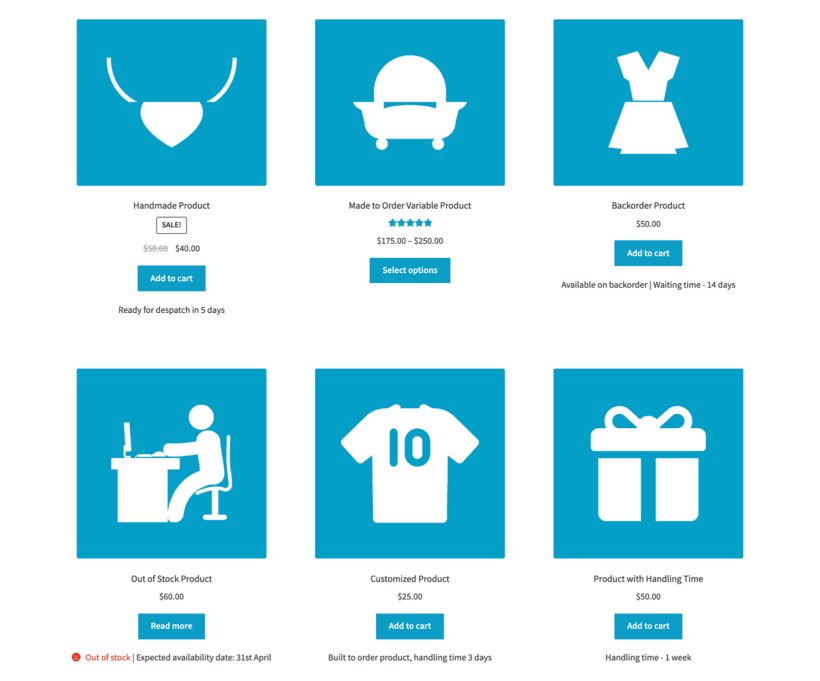Streamlining your WooCommerce order fulfillment: A comprehensive guide

In this detailed guide, we'll cover how WooCommerce order fulfillment works. We'll also explore strategies and plugins to optimize your online business's order fulfillment processes to save time and money 🤑 while improving customer satisfaction.
As a WooCommerce store owner, you know firsthand how vital order fulfillment is to business success. Customers who shop online expect swift delivery combined with a transparent ordering process.
In this post, we'll discuss everything you need to know about the WooCommerce order fulfillment process, including how it works and actionable strategies to streamline order fulfillment.
We'll also explore how to use two powerful plugins to automate crucial tasks. These will allow you to enhance efficiency and customer satisfaction at different stages of the ordering process:
- WooCommerce Multiple Email Recipients - Automatically route order-related emails to different recipients and fulfillment centers depending on the products ordered.
- WooCommerce Lead Time - Enhance your product pages with clear information on how long each order will take to be fulfilled.
What is WooCommerce order fulfillment?
WooCommerce order fulfillment refers to the entire process of handling and completing customer orders from the moment they are placed on your online store to the point of delivery to the customer's doorstep.
Every solid WooCommerce order fulfillment process has the following elements:
- Efficiency - This means streamlining workflows to automate manual, repetitive tasks like order management and inventory processing. A simple way to do this is to use plugins that automate critical steps like order status updates and sync inventory levels across multiple sales channels.
- Accuracy - The best order fulfillment processes are engineered to ensure customers receive the right products on time. This includes everything from setting up correct, detailed product descriptions and attributes when adding products in WooCommerce to implementing quality control measures like barcode scanning or order verification checkpoints in order to prevent shipping the wrong items.
- Speed - Customers expect prompt order delivery. At a minimum, store owners can enable bulk order processing and real-time shipping rate calculations within WooCommerce to reduce order processing times. In addition, integrating your site with third-party logistics providers can further expedite the fulfillment process.
- Communication - Proactively keeping customers informed about their order status builds trust. The best order fulfillment processes include automated emails for order confirmation, shipment notifications with tracking numbers, delivery updates, etc., in addition to customer support channels like live chat or email to quickly resolve inquiries or concerns.
Why should you optimize your WooCommerce order fulfillment process?
Even if your WooCommerce store only processes a handful of orders each month, streamlining your order fulfillment processes should be a priority. Here's how optimizing WooCommerce order fulfillment processes can benefit your online business:
- Faster turnaround times - Automating manual tasks in the order fulfillment process ensures customers receive their purchases quicker. A simple way to do this is to fulfill orders in batches to reduce the time it takes to handle multiple orders simultaneously.
- Reduced errors and returns - An optimized process minimizes the chances of mistakes — for example, sending the wrong products or incorrect inventory calculation. This, in turn, lowers the number of returns and exchanges and saves time and money.
- Better inventory management - Efficient order fulfillment goes hand-in-hand with accurate inventory management. Streamlining the process of fulfilling orders minimizes the risk of unexpectedly running out of stock or being overstocked.
- Cost savings - Using automation tools to optimize the order fulfillment process can lead to cost savings in multiple aspects of your business. For instance:
- Automating email notifications can free up time and prevent mistakes.
- Fewer errors mean fewer returns and associated costs.
- Streamlining your workflows reduces labor costs.
- Automating shipping calculations can help you find the most cost-effective shipping options.
- Improved customer satisfaction - Customers appreciate quick and accurate order deliveries. Optimizing your site's fulfillment processes can give a better customer experience, and lead to positive reviews and repeat business.
The stages of order fulfillment in WooCommerce stores
Here's an overview of the steps in the WooCommerce order fulfillment process:
Order placement
The order fulfillment process begins the moment a customer places an order on your site. WooCommerce securely records order information — items purchased, quantity selected, customer's name, address, etc.
It then assigns a unique order number to track and manage the order throughout the fulfillment process.
Order processing
Here, WooCommerce verifies the accuracy of the order, checks inventory levels, and ensures that the payment is successfully processed on the backend.
For example, let's say your WooCommerce site sells electronic gadgets online. If a customer orders a Macbook Air 15", the system verifies that the specific model is in stock, deducts the quantity from the inventory, and confirms the payment.
This entire process only takes a few minutes, and once the checks are complete, it sends an order confirmation email informing the customer that their order has been received and is being prepared for shipment.
Packaging
This phase involves preparing the ordered items for shipment. Products are packed (ideally using sturdy materials) to ensure customers receive them in good condition. Many ecommerce stores use bubble wrap, packing peanuts, or foam inserts to provide extra padding and cushion fragile items like glassware or electronics.
Also, they securely seal items to prevent tampering or accidental opening during transit and ensure that the contents remain undamaged until they reach the customer.
Shipping
Once the products are securely packed, the next stage is shipping them to the customer's address. This stage involves selecting the appropriate carrier based on the shipping method and arranging for the package to be picked up and delivered.
Since Amazon introduced speedy two-day shipping, customers have now come to expect lightning-fast delivery. You can use plugins to simplify the WooCommerce shipping process — for instance, integrate with shipping carriers like Fedex, USPS, DHL, etc., to calculate shipping costs in real-time, generate shipping labels, provide tracking information to customers, and more.
Tracking and delivery notifications
Keeping customers informed about the status of their purchases is crucial for building customer trust and satisfaction. There are two key ways to do this:
- Sharing timely order status updates - Sending automatic notifications at various stages of the order fulfillment process, like order confirmation, shipment tracking, and delivery confirmation.
- Real-time tracking - Integrating WooCommerce with shipping carriers to provide estimated delivery times and allow buyers to track the progress of their orders from shipment to delivery.
Returns management
Around 20% to 30% of online orders are returned. Create a well-defined returns policy that sets clear expectations for customers regarding the conditions under which returned items are accepted, the time frame for returns, and the refund or replacement process.
Customers should be able to request a return through their account on the WooCommerce site. And similar to order tracking, they should be able to track the progress of the return shipment.
WooCommerce order fulfillment methods
There are four typical order fulfillment methods:
- In-house order fulfillment
- Dropshipping
- Third-party order fulfillment
- Hybrid model
Let's explore each method in detail.
In-house order fulfillment
In-house order fulfillment (also known as merchant fulfillment) is where a business manages all aspects of order processing and shipment internally — everything from storing inventory to picking and packing orders to arranging for shipment.
Advantages of in-house order fulfillment
- Businesses have direct control over the quality of packaging and shipping speed.
- It's easier to customize the packaging and add personalized touches to reinforce brand identity.
- Although the initial setup cost can be high, it can be cost-effective for businesses with consistently huge order volumes in the long run.
Disadvantages of in-house order fulfillment
- Setting up and maintaining a fulfillment center involves significant initial costs, including storage space, equipment, and staff.
- As order volumes increase, scaling in-house fulfillment capabilities can be challenging, potentially leading to delays.
Dropshipping
With the dropshipping ecommerce fulfillment method, the WooCommerce store doesn't physically handle the products it sells.
Instead, they source products from third-party suppliers who also take care of inventory management and order fulfillment. When a buyer places an order, the manufacturer or supplier ships the product directly to them.
Advantages of dropshipping
- It requires low upfront investments for inventory and storage facilities.
- It can quickly scale as there's no need to worry about managing inventory levels, warehouses, staffing, etc.
- Businesses can offer an enormous range of products without the burden of physically stocking and handling each item.
Disadvantages of dropshipping
- WooCommerce sellers have little control over product quality, inventory, shipping times, etc., as suppliers manage those aspects.
- There's usually intense competition among drop shippers, which can lead to low profit margins.
- It can be tough to depend on suppliers, as issues on their end can directly impact the business's reputation.
Third-party order fulfillment
Ecommerce businesses that use third-party order fulfillment services (also called third-party logistics or 3PL) outsource the order processing and shipment responsibilities to external providers.
These companies handle inventory storage, picking, packing, shipping, and other WooCommerce fulfillment processes for the business.
Advantages of using a third-party logistics (3PL) company
- Third-party order fulfillment companies are experts in logistics; they often provide faster and more efficient order processing.
- Businesses that outsource fulfillment can quickly scale operations without the need to invest in additional infrastructure or staff.
- Using a 3PL provider can be cheaper than setting up your warehouse space and managing additional operational expenses.
Disadvantages of using a third-party logistics (3PL) company
- Relying on a third party introduces a level of dependency, and any issues on their end may impact your business's reputation.
- Coordinating with a third-party fulfillment center requires effective communication to ensure accurate order processing and timely customer updates. Luckily, you can use plugins like WooCommerce Multiple Email Recipients to avoid issues (more on this later).
Hybrid models
Some businesses prefer to use a hybrid order fulfillment model; managing certain aspects of order fulfillment internally and outsourcing others to a third-party fulfillment provider.
Advantages of using a hybrid model
- It allows businesses to tailor the fulfillment process to suit their specific business.
- When implemented correctly, it can help reduce the impact of unforeseen issues and inventory shortages.
Disadvantages of using a hybrid model
- Managing both in-house and external fulfillment can be complex and costly, especially during the initial setup.
Best plugins for streamlining order fulfillment
The default WooComerce setup may work fine in the early days of setting up your store. However, if you plan to scale your business, you need to upgrade the setup.
Here are two WooCommerce plugins that can significantly streamline the order fulfillment process:
Automatically route emails to multiple necessary recipients with WooCommerce Multiple Email Recipients
Manually sending order notifications, confirmation, and shipping instructions to all the necessary recipients for each order can be a pain. This is especially true if:
- More than one person on your team is involved in the order fulfillment process.
- You work with external partners, e.g., warehouse providers, delivery persons, etc.
- You use a third-party logistics provider or follow a hybrid fulfillment model.
- You run a dropshipping site.
Whatever order fulfillment process you use, manually sending emails to everyone involved in the order fulfillment process can be time-consuming. Not to mention, it's possible to forget to email the necessary people! 😫
Thankfully, WooCommerce Multiple Email Recipients can fix this.

WooCommerce Multiple Email Recipients is an easy-to-use plugin that lets you automatically send emails to relevant recipients. You can:
- Add unlimited email recipient addresses.

- Route emails to the correct recipients based on the products and/or categories purchased. For example, suppliers of specific items or warehouse facilities.
- Specify which emails the added recipients will apply to, e.g., the order notification email or other emails relating to order status changes.

- A bonus is that it adds extra email address fields to the checkout and/or account page (for logged-in customers) for customers who want to receive order-related updates on more than one email address.

Benefits of using WooCommerce Multiple Email Recipients
- It speeds up the fulfillment process - Manually forwarding emails to notify staff and external partners about updates to each order can be pretty time-consuming. Automating this step dramatically speeds up the fulfillment process.
- It prevents mistakes - Tasks performed manually are prone to human error. If your business still sends emails manually, it's possible to forget to forward messages to necessary recipients.
- It helps streamline things for customers too - It lets you add extra email fields to the checkout page or account page for customers to send order notification messages to more email addresses. This significantly enhances customers' experience.
Here's how this plugin has improved customers' order fulfillment processes:
Improve time estimates with WooCommerce Lead Time
There's no built-in setting in your WooCommerce dashboard to automatically calculate how long it takes for a product to be available for order. This may not be an issue if you sell products that are regularly stocked. However, if you sell:
- Custom products that are personalized for each buyer.
- Made-to-order products that are manufactured or assembled after the order is received.
- Non-stock items, i.e. products you don't hold in quantity.
Not showing this information can negatively impact customer experience and revenue! 😫
Enter: The WooCommerce Lead Time plugin.

Instead of manually adjusting the inventory details every time someone purchases from your store, WooCommerce Lead Time automatically updates inventory status for each SKU based on stock levels and shares the information with customers.
You can use it to add lead time for each item throughout your site — to the individual product page, shop, and category pages, other archive pages, and in the cart, checkout, and emails.
Here's how it looks on the product detail page:

On the shop page:

And on the cart page:

WooCommerce Lead Time is pretty flexible. It lets you customize the lead timeframes storewide, to product categories, and on individual products — so you can tailor it to work for your specific business.
Benefits of displaying order fulfillment times on the product page
- It saves time - The plugin monitors the inventory level for each product. It automatically updates the lead time as soon as it goes out of stock. It frees you from this unnecessary manual task.
- It can reduce support tickets - Customers expect to have all the essential details about a product when considering whether to buy it. Not clearly showing this info can lead to increased support requests, which increases business costs.
- It can improve conversion rates - Not every customer will reach out to your business to enquire about lead time. In fact, many of them will simply bounce off your site without buying anything. Adding timeframes to your site can make your products convert better.
Here's how this plugin has improved customers' order fulfillment processes:
Optimize your WooCommerce order fulfillment process today 🚀
WooCommerce is the best ecommerce platform for every online store. However, its standard order fulfillment functionality is not optimized for modern commerce.
There's no easy way to automatically communicate with partners and staff during order fulfillment. Also, there's no built-in setting to calculate inventory levels automatically and adjust the lead time based on stock status.
These plugins can help you streamline your WooCommerce order fulfillment processes (and save time and money 🤑):
- WooCommerce Multiple Email Recipients: It lets you add emails of people involved and automatically shares order-related updates based on the products ordered.
- WooCommerce Lead Time: It automatically adjusts inventory as soon as orders are placed and shows accurate lead times on your website's product, shop, category (and other archive) pages.
Both plugins come with full support and a 30-day money back guarantee. Get them today and supercharge your order fulfillment process!